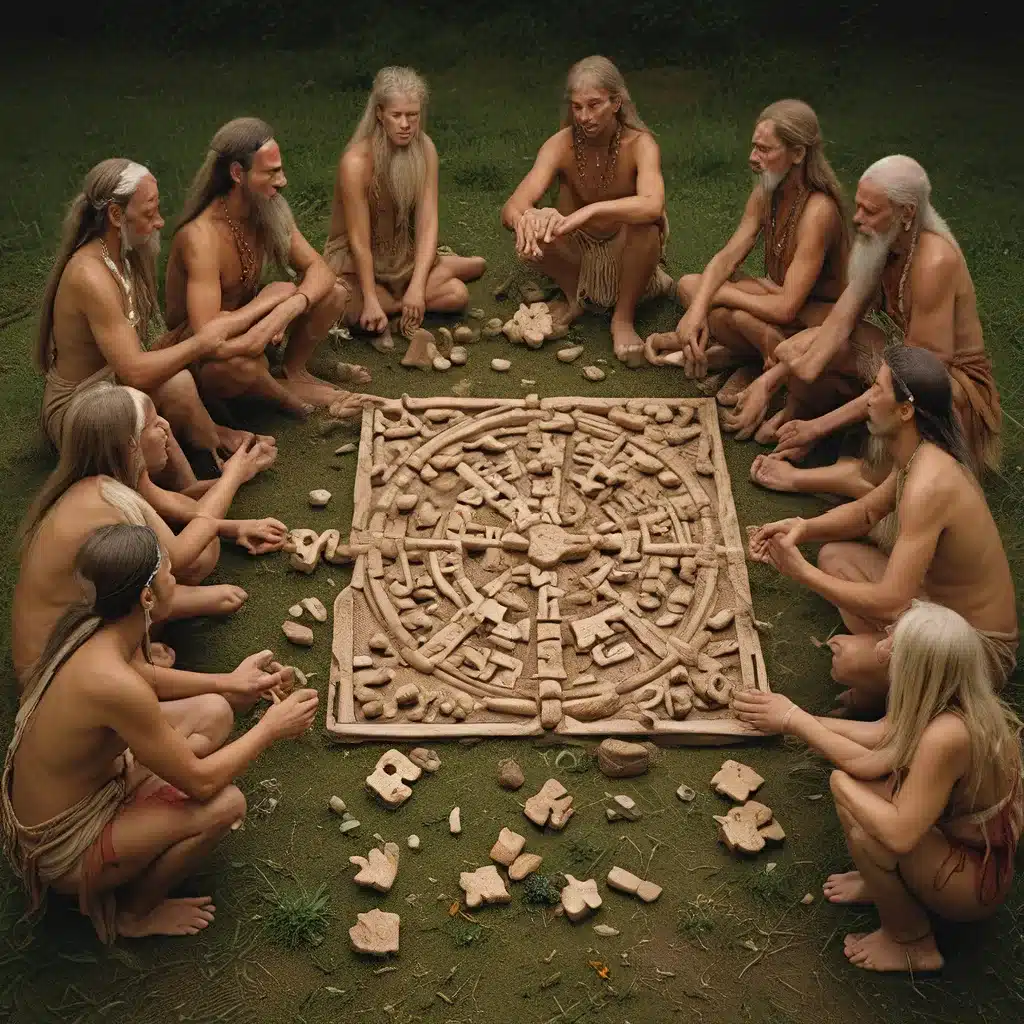
Uncovering the Oldest Known Ritual Site in Human History
The Tsodilo Hills in Botswana have long been revered as a sacred place by the San people, who call them the “Mountains of the Gods.” Recent archaeological discoveries in a hidden cave within these hills have shed new light on the origins of human ritual practices, pushing the timeline back by over 30,000 years.
In the summer of 2006, a team of archaeologists led by Sheila Coulson from the University of Oslo made a groundbreaking find in one of the Tsodilo Hills’ small, secluded caves. Beneath the surface, they uncovered a treasure trove of over 13,000 artifacts – all of them stone spearheads that had been intentionally burned and destroyed as part of an ancient ritual.
Coulson’s discovery revealed that these rituals had been taking place in the cave for over 70,000 years – making it the oldest known ritual site in human history, predating the previous record by more than 30,000 years.
A Sacred Space Dedicated to the Python
The cave itself is situated on the northern side of the Tsodilo Hills, in an area that is both secluded and difficult to access. Upon entering the cave, the research team was immediately struck by a massive, six-meter-long rock that bore a striking resemblance to a python. Covering the surface of this rock were hundreds of intentional indentations, creating a textured, snake-like appearance.
Coulson and her team found no evidence of the cave ever having been used as a dwelling. Instead, all signs pointed to it being a sacred space dedicated to ritualistic practices associated with the python, a powerful and revered creature in San mythology.
“The play of sunlight over the indentations gave them the appearance of snake skin. At night the firelight gave one the feeling that the snake was actually moving,” Coulson remarked.
Beneath the python-shaped rock, the archaeologists discovered a secret chamber that may have been used by a shaman to speak to the people while remaining hidden from view. This strategic placement would have allowed the shaman to seemingly channel the voice of the python itself, further enhancing the ritual’s mystique and power.
Thousands of Ritual Artifacts
The most significant discovery, however, was the 13,000 stone artifacts found buried in the cave’s floor. These were no ordinary tools or implements – they were meticulously crafted spearheads, many of which had been burned and destroyed as part of the ritual practices.
Intriguingly, the raw materials used to create these spearheads did not come from the local area, but had been transported from hundreds of kilometers away. Furthermore, the spearheads themselves were more ornate and colorful than other artifacts from the same time period and region, suggesting they were imbued with special significance.
“The spearheads are better crafted and more colourful than other spearheads from the same time and area. Surprisingly enough it was only the red spearheads that had been burned.”
This deliberate destruction of the artifacts points to a complex, highly symbolic ritual practice that was likely central to the identity and beliefs of the people who frequented the Tsodilo Hills cave.
Challenging the Timeline of Human Civilization
The discovery at the Tsodilo Hills cave has profound implications for our understanding of the origins of human civilization. Until now, the earliest known evidence of ritual practices dated back to around 40,000 years ago in Europe. Coulson’s findings, however, push this timeline back by over 30,000 years, firmly rooting the birth of ritual behavior in Africa, the **cradle of human evolution.
This discovery also challenges the long-held belief that culturally modern practices emerged in Europe after our ancestors migrated from Africa. Instead, it suggests that many culturally modern practices were present in Africa long before they appeared in Europe, further solidifying the continent’s role as the birthplace of humanity.
The Significance of the San People
The Tsodilo Hills have been a sacred place for the San people for thousands of years, and the ancient ritual site discovered by Coulson’s team is a testament to their deep connection to the land. The San, also known as the Bushmen, are considered one of the most ancient human populations on Earth, having diverged from the rest of humanity around 70,000 years ago.
“The San together with the Khoi or Khoikhoi separated from the rest of the world’s people about 70,000 years ago. Today they are commonly referred to as the Khoi-San people.”
This close link between the San and the Tsodilo Hills, combined with the extraordinary age of the ritual site, suggests that the origins of human ritual and spirituality may be deeply rooted in the culture and traditions of this ancient people.
Unlocking the Secrets of the Past
The Tsodilo Hills cave is not the only ancient ritual site that has been discovered in Africa. Göbekli Tepe in Turkey, for example, is another remarkable example of a pre-agricultural ritual center that predates the rise of complex civilizations.
These discoveries highlight the importance of continued archaeological exploration and research in Africa, where the earliest traces of human civilization are likely to be found. By piecing together the puzzle of these ancient ritual practices, researchers can gain invaluable insights into the origins of human culture, spirituality, and the development of complex social structures.
As we uncover more of these extraordinary archaeological sites, we are rewriting the story of human history and challenging long-held assumptions about the origins of our species. The Tsodilo Hills cave and its remarkable artifacts stand as a testament to the resilience and ingenuity of our ancient ancestors, reminding us of the profound depth and complexity of the human experience.
For more information on the latest archaeological discoveries and their impact on our understanding of ancient civilizations, be sure to visit The Lost Kingdoms.


